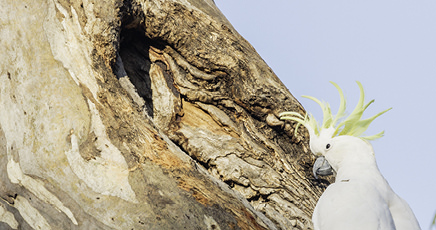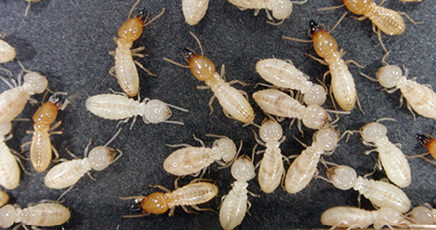STORY
Suyin noticed that some of the bigger trees at her grandparents’ farm had fallen down. “The big storm we had a few weeks ago sadly brought them down, Suyin darling”, Grandfather explained, “I suggest you take a look and see if you can find any surprises”.
Suyin quickly understood what her grandfather meant. A community of millipedes, slugs, ants and more were living inside the tree hollow. It made Suyin wonder how long it takes for hollows to form and how many of our animals rely on them, and what she can do to help create homes for them.

We’re going to build a nest box! Our native animals are in desperate need of homes and nest boxes are an ideal way to help our native birds, marsupials and micro-bats by helping them find a place to live.
For children to:
- understand how animals use tree hollows
- value the importance of habitat and natural tree hollows
- investigate and appreciate the animals that live in your local area
- develop associations with local Landcare and Environmental groups
- undertake a hands-on project.
Nest boxes can be built at any time of the year. Although some animals only need hollows during their breeding season, others need hollows as their everyday accommodation. Once a nest box has been installed, it may take time for animals to explore and begin using their new home, so don’t worry if it does not get used right away.
Introduction
Many of our native animals need tree hollows to shelter and raise their young. Deforestation, competition from introduced animals and urbanisation has resulted in less hollows being available for native wildlife. Nest boxes are a great way to re-create habitat. This learning activity is designed to help educators and young learners successfully complete a nest box project.
Building nest boxes from scratch is a complex activity, using specialised tools and equipment, so we have given some pointers in this activity to make this more simple and achievable. There are many things you will need to consider when making a nest box, so we suggest getting in touch with your local landcare, environmental group or local government before beginning, as many of these organisations hold specialist knowledge about your local animals and can often help with resources and expertise.
*Time allocation is based on having prepared materials and research completed prior to commencing this activity.
Checklist
Instructions
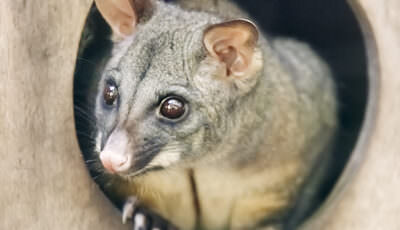
STEP 1
Prepare
Before you begin, approach your Local Landcare or Environmental Group and Local Government for advice, expertise, materials and support.
Consult these Field Guide Apps to research animals in your area. Select an animal that you would like to attract and research its requirements.
Consult nest box guidelines (see the Educator Notes for more information) to find out more about how to construct a suitable box.
Prepare a safety plan for this activity and seek endorsement from your organisation.
Cut and paint the materials, if you are making the box from scratch.
Many aspects of this activity carry risk, so you may need to mitigate risks by:
- Purchasing pre-cut, flat-pack nesting boxes
- Purchasing complete, pre-made boxes
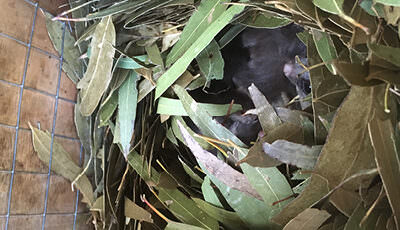
STEP 2
Animal Investigation
Explain to the children that they are going to be creating habitat.
As a group, investigate an animal that you are building a box for. Introduce the activity sheet and use the sheet to record your notes about the animal you are providing habitat for.
Run through your planned build-process, including the safety priorities, tool and equipment use and who will be responsible for how they are used.
Head outside and identify suitable locations for the nest box.
Ask the children if they can identify how the animal that they researched would use the surrounding area.
Use the information learnt during the animal investigation to help guide this discussion
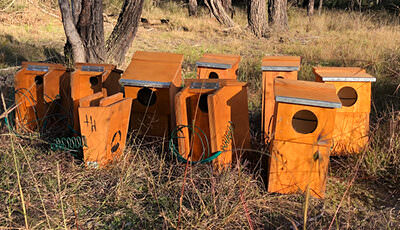
STEP 3
Build and Install
As a team, assemble the pre-prepared panels of the box.
As the box is assembled, discuss the dimensions of the box and the entry hole size. Ask the children how the dimensions and entry will affect the type of animal you are trying to attract.
Refer to the nest box guidelines and fauna field guide to help determine the height and best location of your nest box. Ask a trained professional to help install the nest box at your selected site.

STEP 4
Maintain and Monitor
Sometimes introduced birds and wild bees can take over a nest box. Work with the children to decide on a plan in case this occurs. Your local landcare or other community environmental care group will have some suggestions about what to do if this happens. They can also provide suggestions on how to maintain and monitor your nest box. Many groups have access to pole cameras which allow for nonintrusive observation of the animals inside.
Extension Activity
Hollow count: conduct a walk around your local area, taking note of the established habitat trees. How many hollows are present?
Upload your animal data. Once your nest box is being used, identify the animals using it and add your data to the online database, the Atlas of Living Australia.
Curriculum and Framework Links
SCIENCE
Year 2: ACSSU030, ACSHE035
Year 3: ACSSU044, ACSIS054
Year 4: ACSHE062, ACSIS064
Year 5: ACSHE083
Year 6: ACSSU094, ACSHE100
Year 7: ACSHE120
Year 8: ACSHE135
HUMANITIES AND SOCIAL SCIENCES
Year 2: ACHASSI042
Year 3: ACHASSI052, ACHASSI059, ACHASSI060
Year 4: ACHASSI080, ACHASSK088, ACHASSK090
Year 5: ACHASSI102, ACHASSK120
Year 6: ACHASSI122, ACHASSI130
DESIGN AND TECHNOLOGIES
Year 2: ACTDEK003
Year 3 & 4: ACTDEP017
Year 5 & 6: ACTDEP019
Year 7 & 8: ACTDEK032
HEALTH AND PHYSICAL EDUCATION
Year 2: ACPPS018, ACPPS022, ACPPS023
Year 3 & 4: ACPPS036, ACPPS040, ACPPS041
Year 5 & 6: ACPPS054, ACPPS059
Year 7 & 8: ACPPS073, ACPPS078
ETHICAL UNDERSTANDING
Exploring values, rights and responsibilities
PERSONAL AND SOCIAL CAPABILITY
Social awareness
CURRICULUM CONNECTIONS
Outdoor Learning
CROSS CURRICULUM PRIORITY
Sustainability
MY TIME, OUR PLACE: FRAMEWORK FOR SCHOOL AGE CARE
Outcome 2 and 4
Reference List
ONLINE RESOURCES
Your local Landcare or environmental group is a great resource and may be able to assist with expertise and materials for your nest box project.
Consult these national field guide apps from Australia’s major natural history museums to research animals in your area.
PRINTABLE RESOURCES
This fact sheet from Local Land Services Greater Sydney contains some excellent information, along with nest box designs and plans.
WATCH
This clip from Gardening Australia is a great overview of a successful nest box program in Melbourne. (7.23 minutes)
READ
This newsletter article from Land for Wildlife demonstrates the importance of nest boxes.
ACKNOWLEDGEMENT
This learning activity has been developed in partnership with the Victorian Government Department of Environment, Land, Water and Planning. https://www.environment.vic.gov.au/
IMAGE ATTRIBUTION
Cryptotermes secundus termites. Photographer: Patrick Gleeson on August 03 2009
Other images courtesy of Sam Harrison from LabCoat Learning and and Rob Porter from Landcare Australia
We value your feedback
When you have finished this learning activity, please tell us what you think with our survey.
Your feedback will help Landcare Australia improve the activities in the Junior Landcare Learning Centre.
Why not try one of our other Junior Landcare learning activities?
Creating a butterfly garden
Biodiversity
Love Letters to the Land
Biodiversity|First Nations Perspectives|Food Production|Waste Management
Creating a sensory garden
Biodiversity
Understanding weeds: life cycle
Biodiversity
